Myths and Facts About Butterfly Host Plants
Updated: Aug. 10, 2021
It takes more than nectar to increase the variety of species in your garden. Learn about butterfly host plants and which ones to choose.
Plant it and they will come. Believe it or not, it really is that simple when it comes to butterfly host plants. Scatter dill seeds among your lovely pink cosmos, and soon you’ll see swallowtails. Plant a patch of milkweed, and you’re bound to get monarchs. Got an out-of-the-way corner for nettles? Get ready to welcome red admirals. Butterfly gardening truly is this easy, but myths abound, so let’s set the story straight.
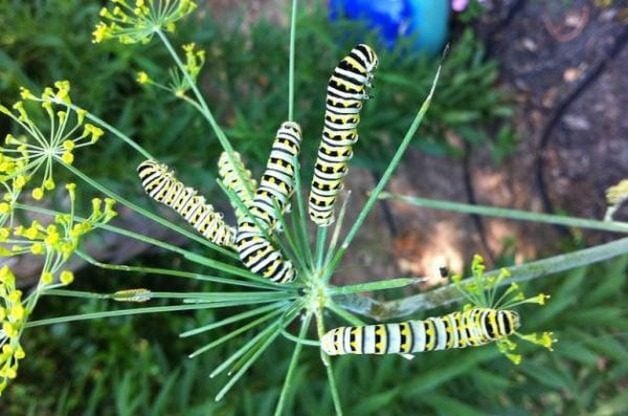
MYTH: The best way to get more butterflies in my yard is to plant nectar flowers.
TRUTH: It’s true that to nectar-seeking butterflies, the more nectar flowers, the better. But it’s even more important to think ahead. Yes, they’ll show up at any yard for nectar, but those butterflies dancing over the daisies need a place to lay their eggs. Supply host plants tailored to the tastes of the caterpillars, and you will enjoy more butterflies for years to come.
Check out the best blooming bushes that attract butterflies.
MYTH: Habitats such as forests, meadows and marshes aren’t necessary for butterflies, since they’re always flitting about looking for flowers.
TRUTH: Sure, butterflies may range miles afield to visit flowers. But when it’s time to start the next generation, many species are highly dependent on a particular kind of habitat. This is often where the plants that their caterpillars eat are found. For butterflies, it’s host plants that determine the place they call home. Some, such as painted ladies (hosts: thistles, mallows, various legumes) and viceroys (hosts: willows and poplars), range widely. Other butterflies, including many species that are in decline, rely on host plants that grow only in certain areas. The gorgeous black-and-white zebra swallowtail, for instance, needs young pawpaw trees to support its brood, so it’s found near the moist, low woods where the trees grow. The Baltimore checkerspot is a wetland species, because that’s where one of its favorite host plants, turtlehead (Chelone glabra), naturally grows.
Don’t forget to grow late-blooming fall flowers that attract butterflies.
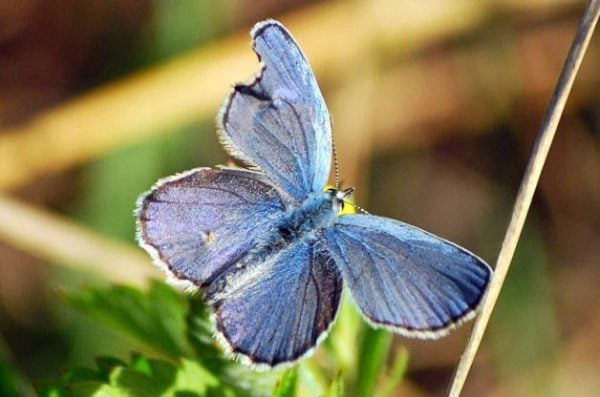
MYTH: Butterfly populations are doing fine. Any yearly differences are only normal cycles.
TRUTH: Sadly, many North American butterflies are in decline, just as they are in Great Britain and elsewhere in the world. Butterflies that rely on habitat-specific butterfly host plants are among the most threatened. If a bulldozer scrapes off their favorite patch of host plants, they may be out of luck. The Karner blue, a dainty little beauty, relies on a lupine (Lupinus perennis) that grows in the sandy prairies, lakeshores and pine barrens of the Northeast and Midwest. And these lupines are disappearing. Fritillary species that depend on native violets are declining, too. For monarchs, it’s the loss of milkweed in herbicide-sprayed farm fields that’s suspected to be an important cause of their falling numbers.
Are monarch butterflies endangered?
MYTH: Adding host plants to backyards is such a small effort that it won’t do much to help butterfly populations.
TRUTH: One small step for butterflies in the backyard is one giant leap for butterflies everywhere! Home butterfly gardens may be small, but with so many of us helping butterflies, those efforts add up in a big way. Monarch Watch has developed a way-station program for schools, businesses, gardeners and anyone else with a bit of space to offer host and nectar plants. Visit monarchwatch.org/waystations to learn more.
Here’s how to identify and attract pearl crescent butterflies.
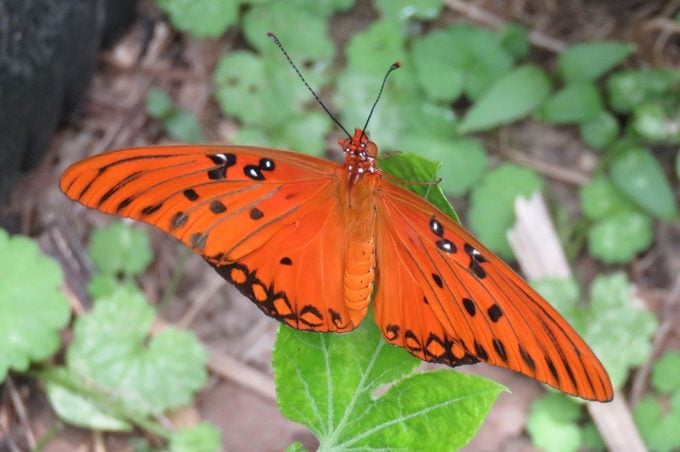
MYTH: Caterpillars will chew host plants to bits, and who wants that in their garden?
TRUTH: Once you spot your first butterflies-to-be, you won’t mind the nibbled look at all. It’s a sure sign of success! You’ll find yourself checking the progress of the brood day by day, looking forward to more beautiful wings. Butterfly gardening just means looking at your garden in a different way.
Follow these tips for watching and photographing butterflies.
MYTH: Host plants aren’t as pretty as the flowers planted for nectar. They look weedy.
TRUTH: Butterfly host plants can be just as showy as garden flowers. Bright-orange butterfly weed, pink swamp milkweed, pink or white turtlehead, Western bleeding heart, blue bird’s-foot violet, hollyhocks, snapdragons, nasturtiums: All are gorgeous garden flowers as both host plants and nectar sources. Bronze fennel and dill offer pretty foliage, which makes them good garden players, too. Nettles are the preferred host plant of the widespread red admiral butterfly, but not everyone welcomes a patch of stinging nettles in the yard. Luckily, these pretty fliers are just as fond of false nettle (Boehmeria cylindrica), a nonirritating plant. Both types of nettles spread fast, so plant them in an area where you won’t fret if they grow out of bounds.
Check out unique gifts for butterfly lovers.
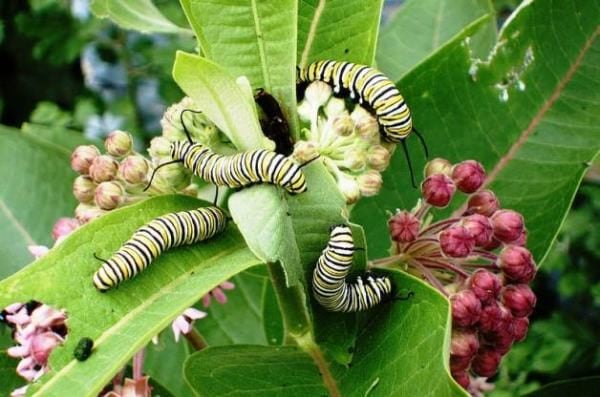
MYTH: Butterflies are highly specific about which plant they’ll lay their eggs on. Many use just one particular kind of plant.
TRUTH: This is true for some species but way off the mark for many others. Think plant family, rather than species. For instance, mustard family plants—from broccoli to arugula to nasturtiums—are perfect for cabbage whites. The entire milkweed family will attract monarchs. Willows bring in mourning cloaks, and elms attract Eastern commas.
Check out beautiful butterfly pictures you HAVE to see.
MYTH: Planting a host for a butterfly species that doesn’t live in my area is a good way to attract them to my yard; they’ll seek the plant at egg-laying time.
TRUTH: Not likely, if the butterfly’s natural range is far away. But it could make a difference if every neighbor along the way pitched in as well. Some experts believe the pipevine swallowtail expanded its range in response to the popularity of Dutchman’s pipe (Aristolochia spp.) as a porch vine.
Need to work on butterfly identification? Here’s a helpful cheat sheet.
MYTH: There are too many butterfly host plants to remember; no one size fits all.
TRUTH: Can you remember three? Milkweeds, dill and hollyhocks: They’re a great place to start, and all have wide appeal – the magic three of butterfly gardening. Then fill in the gaps with native plants. Chances are some butterfly (or moth) will be happy to call them home.
MYTH: Only native plants are used as butterfly host plants.
TRUTH: Native plants are usually the best choice for butterflies, but non-natives that belong to the same family are adopted by some species, too. Dill, parsley and fennel aren’t American plants; they got their start around the Mediterranean. Yet the larvae of the black swallowtail and anise swallowtail will happily munch them all. English plantain, a common imported weed, hosts buckeye butterflies and other species along its wide track. Monarchs will accept any milkweed species, no matter how far from its native origin it is growing. This isn’t always true, though; using certain non-native pipevine species can be fatal for pipevine swallowtails. Do your research before planting.
Avoid planting the worst poisonous and invasive plants for your yard.
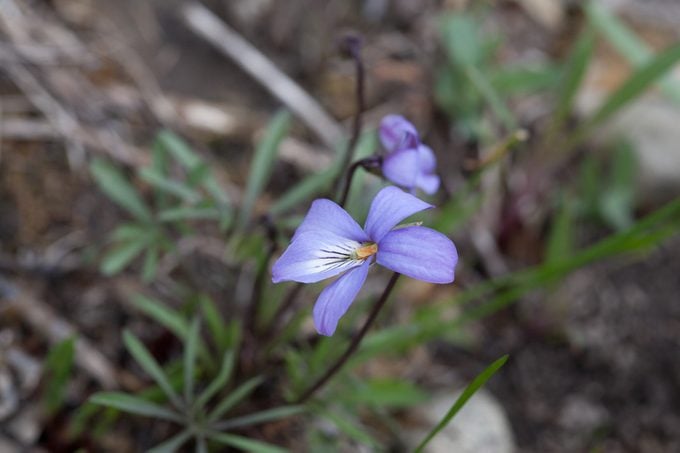
MYTH: If I want to attract fritillaries, all I have to do is plant violets or pansies.
TRUTH: Here’s where natives are vital. These butterflies are picky about where they put their eggs, and native violets are the plants their larvae chomp. A few species have also adopted non-native Johnny jump-ups (Viola tricolor), but it’s the native violets they most prefer. And this is where we gardeners can make a big difference. The gorgeous regal fritillary and some of its other fritillary relatives are declining, because those native violets have been turned to the plow or destroyed by development. By nurturing native violets, such as bird’s-foot violet (Viola pedata) for the regal fritillary, we can provide an oasis in our gardens for the upcoming brood. Be sure to choose violets that are native to your region, not just “American natives.” With dozens of fritillary species ranging here and there in North America, regional tastes matter. In the Midwest, for instance, bird’s-foot violet is a good choice; not so in the West, where the fritillaries prefer yellow-flowered Nuttall’s violet (Viola nuttalli).
Psst—these butterfly flowers are easy to grow from seed.
